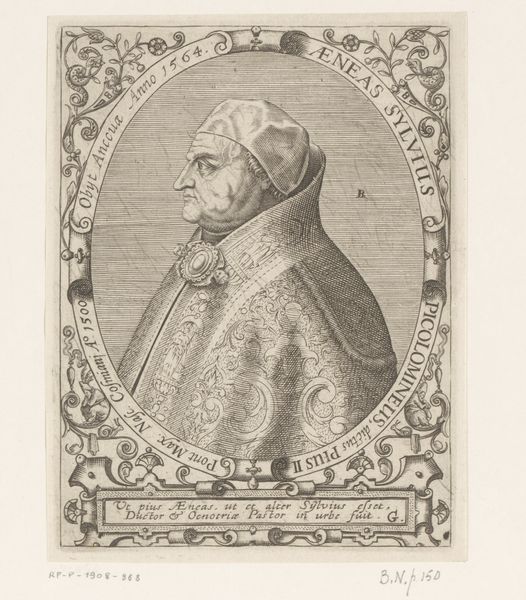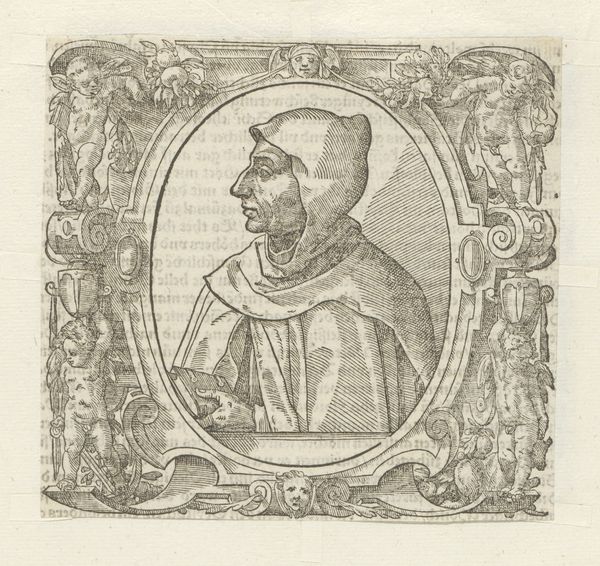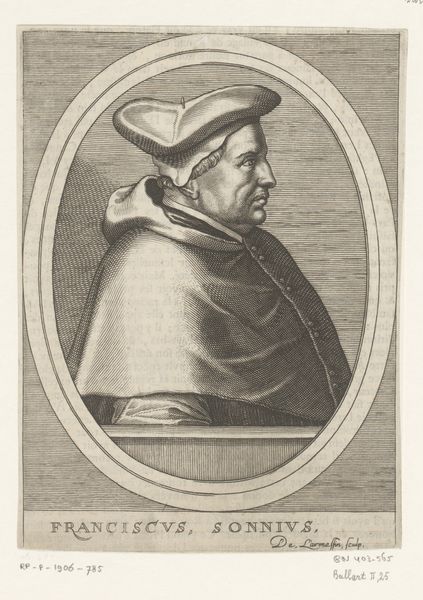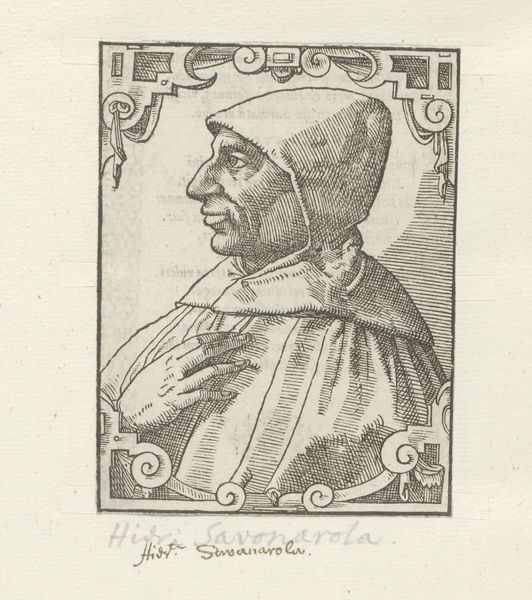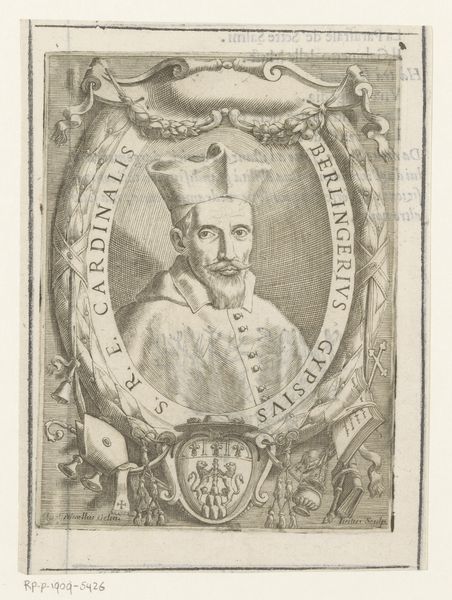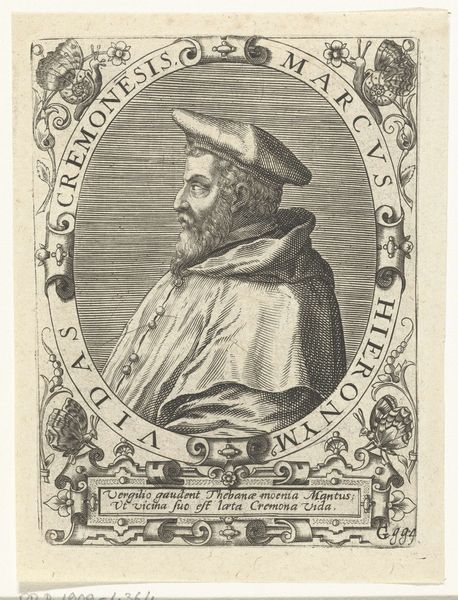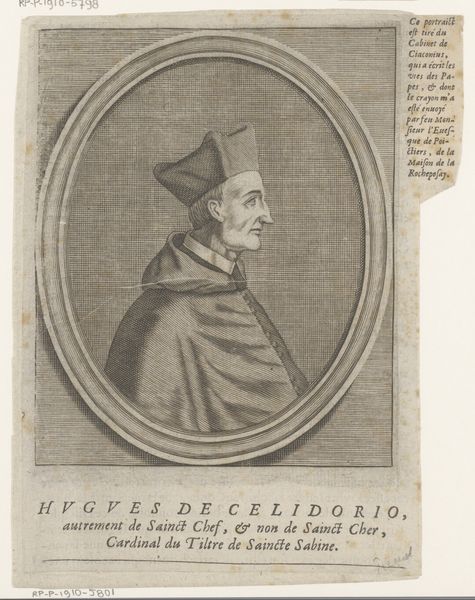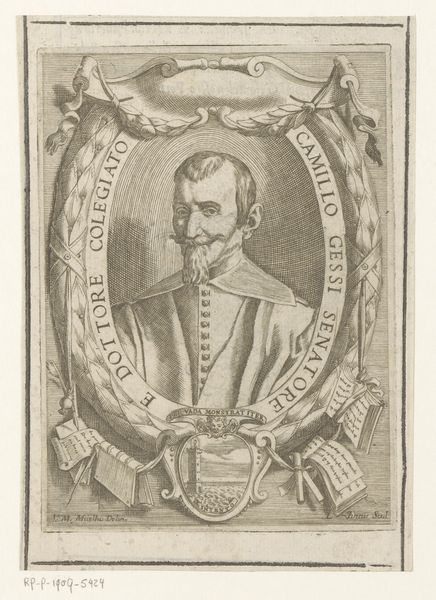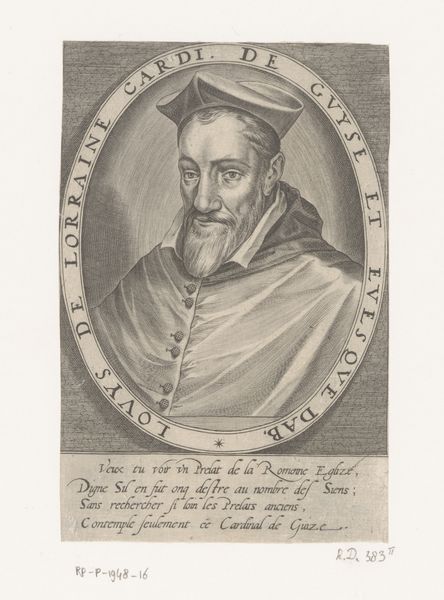
print, engraving
#
portrait
#
baroque
# print
#
old engraving style
#
portrait reference
#
portrait drawing
#
history-painting
#
engraving
Dimensions: height 150 mm, width 88 mm
Copyright: Rijks Museum: Open Domain
Editor: Here we have a fascinating engraved portrait of Gregor de Valencia, created in 1738 by Gabriel Uhlich. It gives off a very formal and austere vibe, almost like an official document. What strikes you when you look at it? Curator: Well, I'm immediately interested in understanding who Gregor de Valencia was, and why his image was disseminated in this way. The inscription around the portrait identifies him as a member of the Society of Jesus, a Jesuit theologian. Given the historical context, prints like this served a crucial purpose. Editor: In what way? Curator: These images weren't just aesthetic objects, they were tools. They visually reinforced the power and influence of the Church and the Jesuit order, circulating idealized images of their prominent members. Think about the politics of imagery; who gets remembered, and how? This portrait, made nearly a century after his death, keeps his memory alive, shaping a particular narrative of scholarship and piety. How do you think the style contributes to this? Editor: It seems like the Baroque style, with its detail and formality, lends him a certain gravitas. It's a very public declaration of his importance. Curator: Exactly! The setting, framing and the crisp line work project an air of authority. The medium of print is key too, think about reproducibility, about power structures embedded in its mass circulation to different strata of society. Editor: So it’s less about artistic expression and more about propagating a particular message? Curator: It’s both! Art never exists in a vacuum. The artist's skill is employed to serve a broader socio-political purpose. Uhlich created a compelling image that upheld the values of the Jesuit order within 18th century society. I’m struck with this new appreciation! Editor: I never thought about it that way, I always thought of prints being for artistic dissemination of art or knowledge, never truly understood their power in institutional identity.
Comments
No comments
Be the first to comment and join the conversation on the ultimate creative platform.
